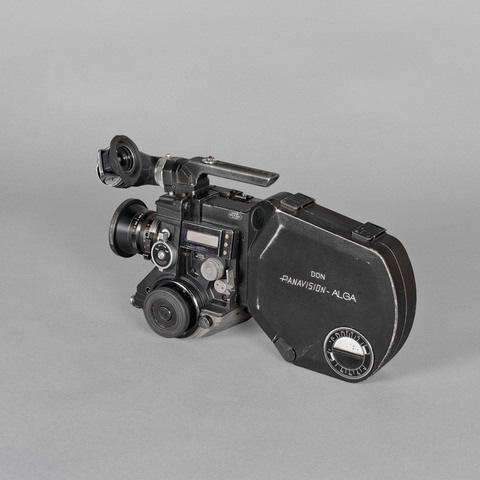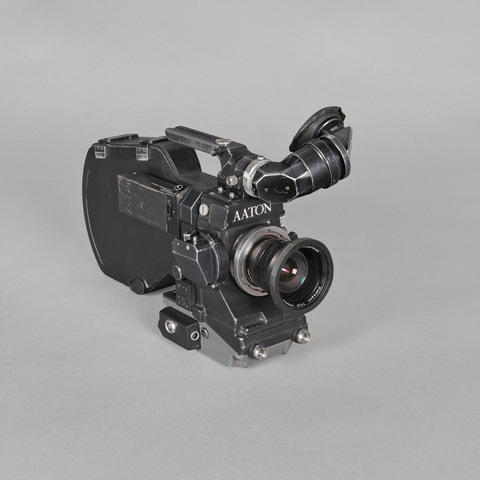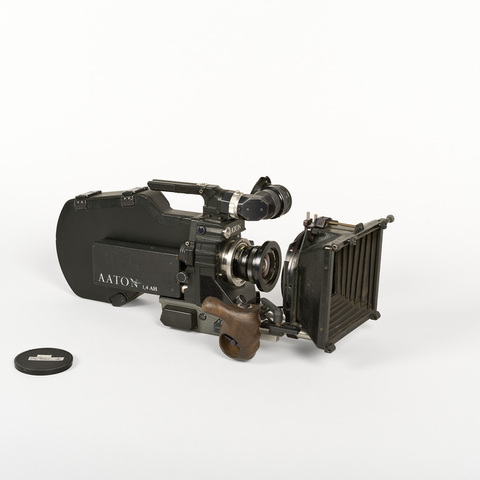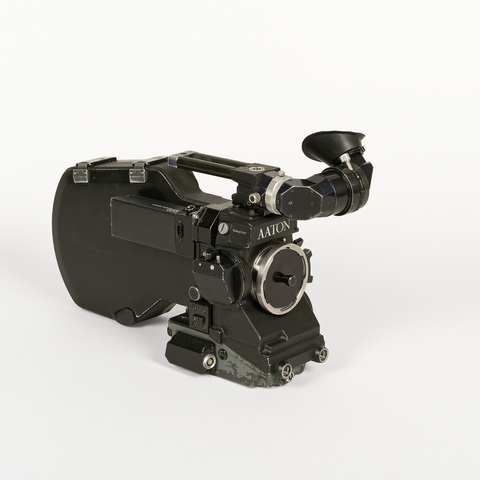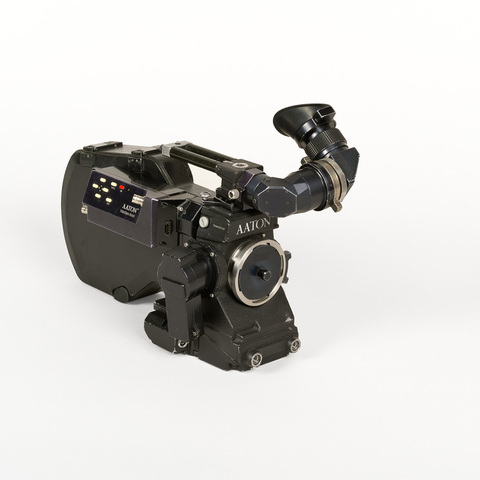Caméra film 16 mm et super 16 mm
Fiche détaillée
Type de l'appareil
entraînement du film 16 mm et super 16 mm par une griffe ; magasin avec disque magnétique 120 m. de film co-axial avec deux débiteurs dentés et compteur de mètre ; reprise vidéo CCD Sony Aaton ; obturateur à miroir 180° - 172,8° - 150 ° - 144 ° ; vitesse 5 à 75 images/seconde ; time code Aaton intégré ; écran LCD avec compteur d'images, mètres, ASA, batterie, temps ; visée reflex orientable
Auteurs
Beauviala Jean-Pierre
Grenoble, 2 rue de la Paix
Fabricants
Sony
Tokyo
Aaton
Grenoble, 2 rue de la Paix
Utilisateurs
Beauviala Jean-Pierre
Grenoble, 2 rue de la Paix
Distributeurs
Aaton
Grenoble, 2 rue de la Paix
Sujet du modèle
Informations non disponibles
Objectif
Carl Zeiss n° 6 670 492 Distagon 1 : 1,2 f = 12 mm
Taille de l'objet
Ouvert :
Informations non disponibles
Fermé :
Longueur : 43 cm
Largeur : 20 cm
Hauteur : 25 cm
Diamètre :
Informations non disponibles
Taille de la boîte de transport
Informations non disponibles
Remarques
Marques : "Aaton made in France" ; "Panavision" ; "CCD video camera module manufactured by Sony n° 23399".
"The features that made a name for Aaton back in 1974 are of course present and improved upon in the XTR : silence of running unequalled by any other 16 mm camera ; incomparable viewfinder definition and brightness ; perfect image steadiness ; integrated time recording and video-assist ; cat-on-soulder comfort dear to documentary film-makers. The Aaton was the first camera to break the 24 dB sound barrier in the seventies : the key to this silence is a claw movement that is absolutely linear in the film plane (Aaton patent). Today the XTR can do even better : the cat-on-soulder now purrs at about 21 dB. [...] The extraordinary brightness and sharpness of the XTR viewfinder comes as a surprise to the operator used to other cameras. This quality is a result of the concave shape of the fibre optic screen (Aaton patent), ensuring total correction of field curvature and other optical aberrations over the entire viewing screen. [...] The LCD display provides a permanent check on essential shooting parameters : battery voltage, ASA setting of the photometer and timecode diode brightness, shooting speed, time of the AatonCode clock, and footage remaining in the magazine. Integrated video assist : video assist being part of the initial design, the XTR loses not an iota of its slender profile when a video camera is nestled alongside the magazine. The video relay lens, like the viewfinder, takes the image from the concave fiber optic screen : this means sharp video pictures as well. The beam splitter - placed between viweing screen and eyepice - is retractable : it takes no light away from the finder when the video assist is not in use. Manageable magazine : [...] A flashing diode in the viewfinder warns the operator during the last ten seconds of a film roll. The magnetic magazine drive coupling is an original feature of the XTR [...]" (Aaton XTR, Grenoble, Aaton, 1989).
Bibliographie
Aaton cameras Aäton - XTR technicians' manual, octobre 1984.
Aaton XTR, Grenoble, Aaton, 1989.
